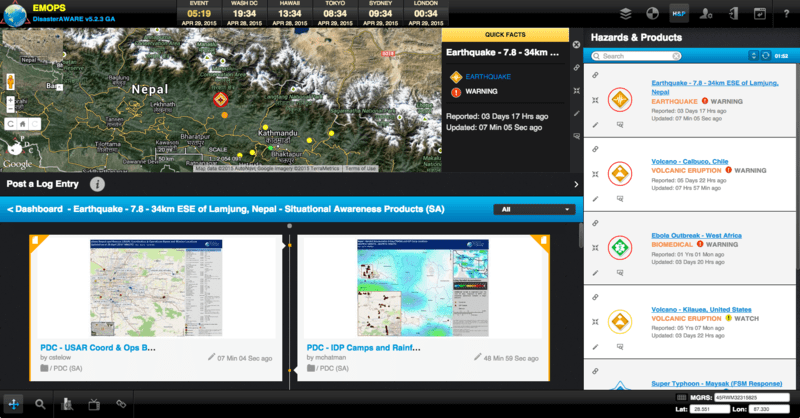Days into the response to the disastrous a 7.8 M earthquake near the capital of Nepal, damage is still being assessed. Casualty numbers are still rising at this point and numbers will be adjusted regularly as search and rescue teams reach remote areas.
Pacific Disaster Center (has developed and released a number of products to reflect the circumstances of populations who are especially vulnerable, such as those who are very young, the elderly, those with disabilities, or those who are known to be previously malnourished. Additionally, Risk and Vulnerability Profiles are available for Lack of Resilience, Vulnerability, Coping Capacity, Healthcare Capacity, and Vulnerable Heath Status.
Impacts to agriculture and food security remain uncertain and many people have been internally displaced (Kathmandu, Bhaktapur, Nuwakot). Fuel reserves are low, power is limited, banks remain closed, mobile networks are experiencing outages, some roads remain unusable, schools have been impacted, and health facilities are in need of supplies. Additionally, there are concerns about potentially challenging weather conditions, including rain, hitting in the affected areas.
PDC will continue to support the response community as they rush to meet the needs of the impacted population.
For more information on Response Operations in Nepal:
• Find the latest PDC Situational Awareness Products for Nepal,
• Look at the latest UN RC/HC situation report, and
• Visit ReliefWeb for additional sources and links.
Read about PDC support for the earthquake response and see some products created for emergency managers:
• Health Care Resources Stretched Beyond Capacity by Earthquake Injuries
• Data Access for Supporting Response and Recovery in Nepal
• Critical Data on Infrastructure in Nepal as Death Toll Rises
• 7.8M Earthquake Strikes Nepal, Followed by Aftershocks

